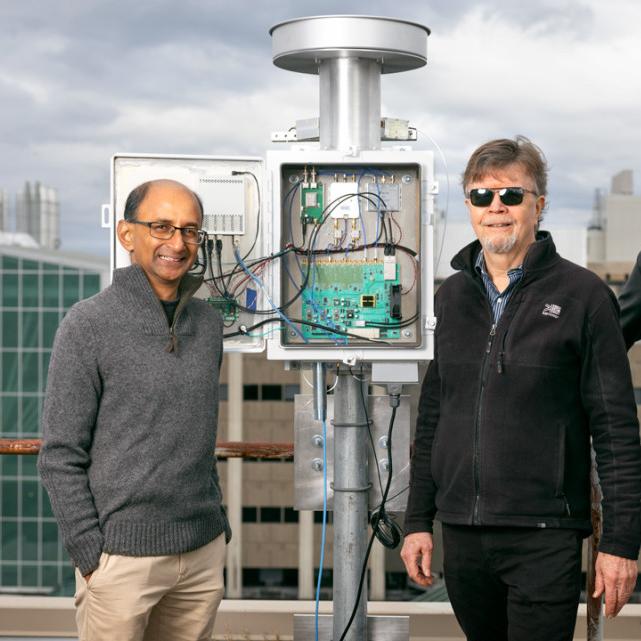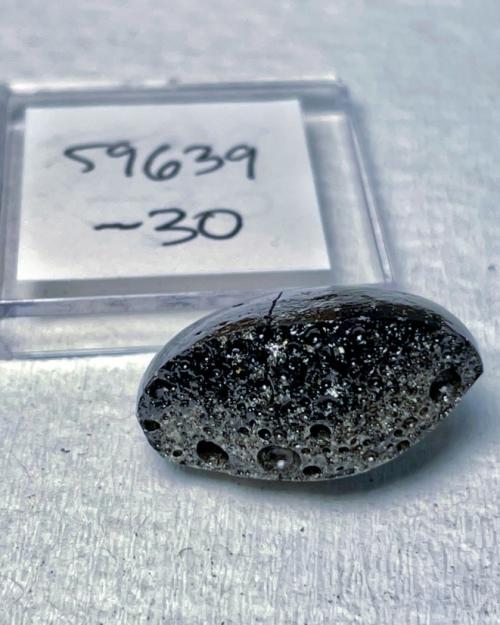The exploration era for the new James Webb Space Telescope (JWST) is getting hot – volcanically hot.
A multidisciplinary group of Cornell researchers has modeled and synthesized lava in the laboratory as the kinds of rock that may form on far-away exoplanets. They developed 16 types of surface compositions as a starter catalog for finding volcanic worlds that feature fiery landscapes and oceans of magma.
Their research, “Volcanic Exoplanet Surfaces,” was published in the forthcoming November 2022 edition of Monthly Notices of the Royal Astronomical Society.
“We have synthesized compositions that are representative of possible exoplanet surfaces that combine star metallicity data, thermodynamic modeling, and laboratory experiments,” said lead author Esteban Gazel, the Charles N. Mellowes Professor in Engineering in the Department of Earth and Atmospheric Sciences (EAS), in the College of Engineering. He is also a member of Cornell’s interdisciplinary Carl Sagan Institute (CSI).
“The new observations of lava worlds by JWST are unlocking the secrets to what kind of places are on our cosmic shore,” said co-author Lisa Kaltenegger, CSI director and associate professor of astronomy in the College of Arts and Sciences. “Our catalog of volcanic exoplanet surfaces provides a tool to decipher what composes these worlds.”
Marc-Antoine Fortin, a former associate in Gazel’s and Kaltenegger’s research groups, created and measured possible physical exoplanet surfaces, guided by previous models of what makes up planets around known host stars.
“As Earth and planetary scientists, we are looking for clues to early planetary evolution,” Fortin said. “Here on Earth, we have some natural relics – very old rocks – that offer us an idea about our own planet billions of years ago.
“These lava worlds are like a time machine, because Earth was once lava, too,” Fortin said. “But with exoplanets, at least for those planets filled with magma, we can see planets in different stages of their evolution.”
Lava worlds provide strong clues to exoplanet configuration, Fortin said. “We’re looking at exoplanets in other cosmic neighborhoods,” he said, “learning everything we can about these distant planets that, at least in our lifetimes, we won’t be able to visit.”
With the successful launch of the Webb telescope and fruitful early retrievals of data and images, science has an opportunity to explore exoplanets in greater detail than ever before, Gazel said. “Our early catalog becomes an important tool to understand the chemical composition of volcanic exoplanets that are not described best by solar system analogs,” he said.
Collaborating with Fortin, Gazel and Kaltenegger on the research is Megan Holycross, assistant professor in EAS.
To assemble the catalog, Fortin and Gazel selected the composition of possible rocky planets mantles representative of planets that could form around different stars. Then, using thermodynamic modeling, they computed surface compositions at different melting points.
Collaborating with Holycross, the group created synthetic lava in laboratory furnaces that matched these compositions, then cooled them to replicate possible exoplanet surfaces.
Afterward, Fortin measured the possible infrared reflection spectrum using the new spectroscopy equipment in Gazel’s lab. He linked their chemical composition to a strong spectral characteristic – known as the Christiansen feature, a peak found at nearly 8 micrometers – that correlates with silica content and other major chemical components.
According to Fortin, there’s an even larger picture: “We are trying to understand not just exoplanets, but all rocky planets – including our own.”
The Heising-Simons Foundation supported this research.





